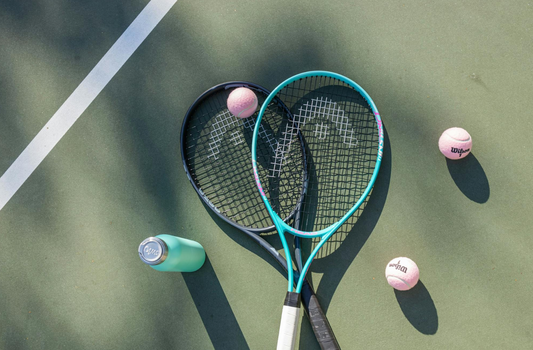Whether you’re playing tennis or pickleball, changing ends is a basic aspect of both sports. The intent of requiring players to change ends is to promote fairness by ensuring one player or team isn’t affected by external factors such as sun, wind, or court condition more than the other. While both sports require players to change ends, the rules differ in timing and frequency. Let’s break down the differences between changing ends in tennis and pickleball and explore some common mistakes.
Tennis
In tennis, players change ends after every odd-numbered game. This rotation continues throughout the set. At the end of the set, players change ends if the total number of games in the set is odd, but if the set ends with an even number of games played, players do not change ends and stay on the same end to begin the next set after taking a break.
Typically, in tiebreakers, which occur when the set reaches 6-6, players change ends every six points (e.g., 4-2, 6-6, etc.). If a tournament decides to use the Coman Tiebreak Procedure rather than the regular procedure, the election must be announced before the start of tournament play. The Coman procedure may be used with any set or match tiebreak. The only difference between the Coman tiebreak and a regular tiebreak is that players change ends after the first point, after every four points following the first point, and at the end of the tiebreak.
Why would a tournament opt to use the Coman Tiebreak? There are two main benefits of the Coman Tiebreak. First of all, it allows servers to serve from the same end, thus ensuring that the tiebreak serving conditions are the same as those of the set. Furthermore, with the more frequent changing of ends, court conditions (e.g., sun, shadows, lights, wind, etc.) affect both players/teams more evenly.

Pickleball
In pickleball tournaments, a match usually consists of the best two out of three games to 11. While players change sides of the court with their partner throughout a game, players do not change ends with their opponents until the end of the first match. If a third game is needed, the players change ends after the first player or team gets to 6 points.
In certain situations, such as consolation matches or when time is short, matches will consist of just one game to 15 points or 21 points. If this is the case, players should change ends after the game reaches the midpoint (i.e., after one player or team scores 8 points if playing to 15 points or after one player or team scores 11 points if playing to 21 points).
Common Mistakes
Even experienced players can make errors when changing ends. Some of the most common mistakes include:
Forgetting to Change Ends or Changing at the Wrong Time — Players sometimes stay on the wrong end or miscount points and change too early or too late, especially during tiebreakers, leading to confusion and potential disputes. If you forget to change ends, correct the error as soon as it’s noticed, but previously played points remain valid.
Losing Track of Service Order – When playing doubles in pickleball, changing ends can sometimes cause players to forget their serving positions, leading to incorrect service rotations. If you or your partner served out of turn, continue as if the mistake didn’t happen and deliver the next serve from the correct position.
Not Adjusting to Change in Court Conditions – While not necessarily a mistake, a complication that occurs from changing ends is failing to adjust to the wind, sun, or differing court conditions after changing ends. If environmental factors are at play, try your best to adjust your serves and strokes accordingly.
Conclusion
Factors such as wind, sun, and surface conditions can impact players in both tennis and pickleball. Changing ends ensures fairness across all conditions and also allows for a reset or a shift in momentum. Understanding when to change ends in tennis and pickleball and anticipating common mistakes can help you prepare for different conditions in the game.




